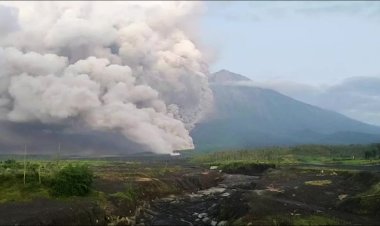Severe drought in Spain uncovers submerged monuments

A centuries-old church and a huge megalithic complex are among the underwater monuments that have resurfaced in Spain as a severe drought causes water levels in reservoirs to plunge.
After a prolonged dry spell, Spain's reservoirs -- which supply water for cities and farms -- are at just under 36 percent capacity, according to environment ministry figures for August.
The receding waters have exposed the ruins of an 11th-century church in the usually submerged village of Sant Roma de Sau, which was flooded in the 1960s when a nearby dam was built.
Normally, the church's bell tower is the only visible sign of the village in the northeastern region of Catalonia.
Drawn by pictures on social media and television reports, crowds of tourists fill the restaurants in the nearby village of Vilanova de Sau.
"Normally you can only see the bell tower," said Sergi Riera, who came to see "something that has not been visible for years".
In Spain's western Extremadura region, the receding waters of the Valdecanas reservoir have revealed a prehistoric stone circle on an islet that is normally underwater.
Dubbed the "Spanish Stonehenge", the circle of dozens of megalithic stones was discovered by archaeologists in 1926 but the area was flooded in 1963 when the reservoir was built.
The stones are also drawing tourists, who reach the islet on boats operated by several private firms.
Officially known as the Dolmen of Guadalperal, the site is believed to date back to 5000 BC.















